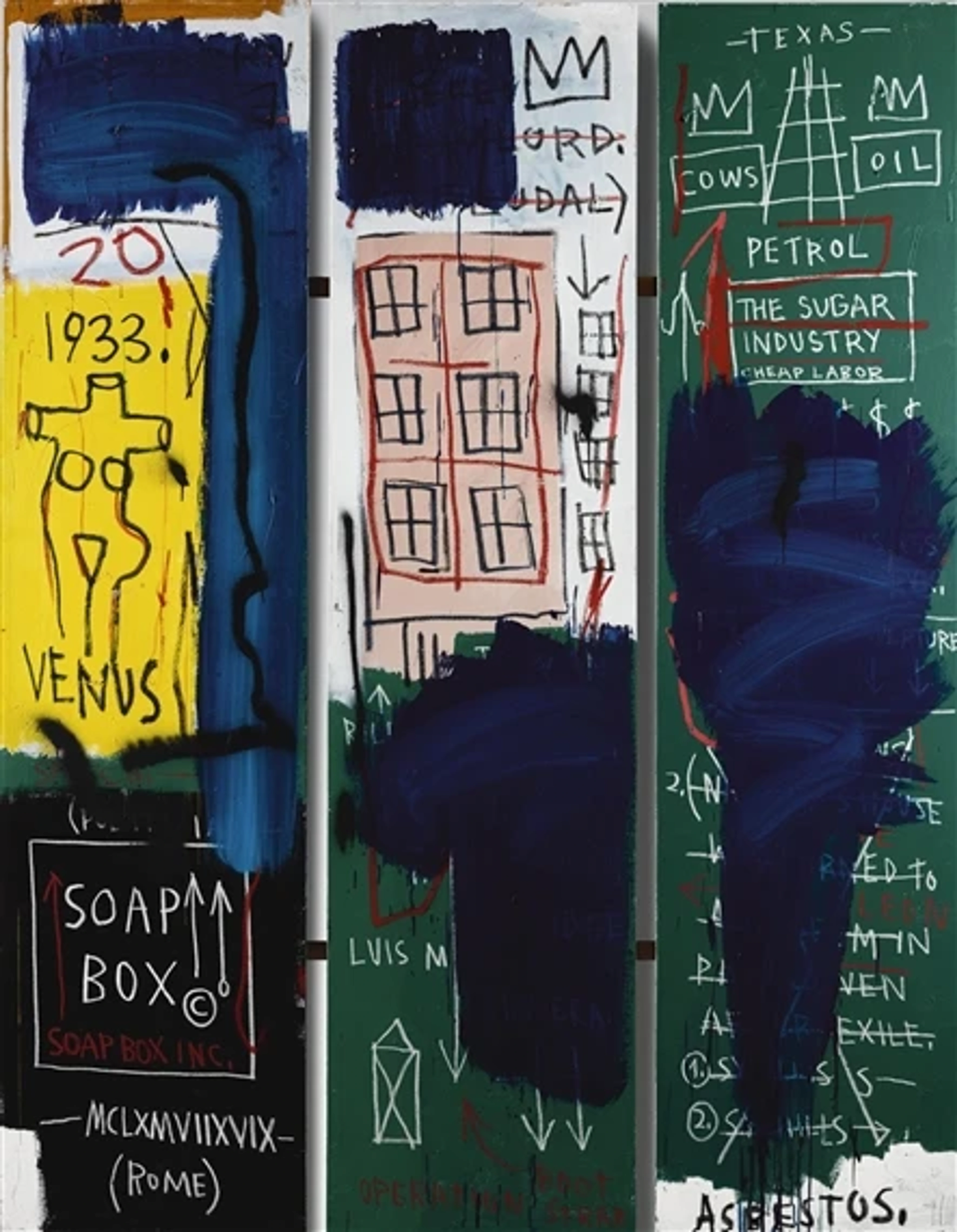
An Unfiltered Q&A: How I Unearth Tomorrow's Abstract Art Stars
Alright, settle in. Grab a coffee, because today we're pulling back the velvet curtain a little on something I get asked about constantly: "How do you know?" How do I sift through countless portfolios, gallery submissions, and late-night Instagram scrolls (don't judge, we've all been there, lost in the algorithmic rabbit hole, haven't we? My screen time is frankly embarrassing) to find that one artist who just… clicks? Especially those who paint with bold colors and a fearless spirit, leaning into the abstract, whether it's the raw energy of gestural abstraction, the serene precision of geometric abstraction, or the meditative depth of a color field.
It's less a science, and more a gut feeling, a dance of happy accidents that often reveal themselves in the interplay of bold gestures, precise geometry, or vast color fields, and a relentless pursuit of that elusive thing – that undefinable quality that makes your breath catch and whispers, "Now that is significant." For me, that 'thing' often manifests as a unique perspective, a raw emotional truth, or a sheer audacity of vision. It's the moment when the art on the canvas feels less like paint and more like a direct, unfiltered conversation with a soul. So, grab another cup, because in this candid Q&A, we'll dive into what truly sparks my interest in abstract art, the unwavering dedication I seek in artists, the gritty practicalities of navigating the gallery world (from documentation to contracts), my evolving perspective on AI's role, and of course, some unfiltered advice for both artists and collectors. This journey, after all, is a beautiful two-way street. Let's dive into the questions I get asked most often, kicking off with the immediate visual impact of a piece.

zenmuseum.com, https://creativecommons.org/licenses/by/2.0/
Q: What initially catches your eye in an abstract piece?
Honestly? It’s rarely about perfect technique or fitting a fleeting trend. Those things are great, don't get me wrong, but they're not the spark. For me, it’s a whisper, a unique voice that cuts through the noise. It’s a piece that makes me stop, maybe even tilt my head a bit, and think, 'Now that is interesting.' Actually, 'interesting' is an understatement – it's more like a sudden jolt, a physical pull that grabs my breath. It's the raw, undeniable energy emanating from the canvas, a visual hum vibrating with the artist's unique frequency, a resonance that bypasses the intellect and speaks directly to something primal. Imagine a silent chord struck deep within the canvas – for me, it feels like an unexpected tremor in the air, a visual frequency only the soul can truly hear.
Visually, it might manifest as an unexpected color juxtaposition – perhaps a jarring clash of neon green against a deep indigo that, against all odds, creates a palpable sense of electric calm. It’s like finding a quiet hum in the middle of a bustling city street, where intense hues vibrate in an unexpected, harmonious tension, drawing you into quiet contemplation amidst the visual clamor. Or conversely, a single, searing stroke of vermillion that feels like a shout against a muted background, a defiant declaration that demands attention, its raw emotion starkly amplified by the surrounding restraint, defying conventional color theory. It could be a fearless, sweeping brushstroke that defies expectation, like a single, confident slash across the canvas that feels both spontaneous and utterly deliberate, conveying immense energy. Or it might be an arrangement of forms where the composition creates an inexplicable tension, communicating directly with your soul – perhaps through unexpectedly unbalanced elements that somehow resolve into a precarious harmony, or an implied movement that draws your eye relentlessly through the piece. The sheer audacity of vision I look for isn't just about being different; it's about an artist daring to create their own visual rules, perhaps using discordant elements that somehow resolve into a powerful whole, or constructing a narrative through abstract shapes that feels deeply personal and universal simultaneously. And yes, the sheer scale of a piece can be a visceral punch to the gut; a small, intimate work can draw you into its quiet intensity, while a massive canvas can envelop you, making you feel physically part of its world. Different abstract styles, from the explosive energy of Abstract Expressionism to the serene precision of Geometric Abstraction, can each ignite this spark in their own unique ways, often challenging our preconceptions of what art can be. I've also found myself captivated by artists who demonstrate a consistent evolution or experimentation within their chosen style, pushing its boundaries rather than simply adhering to its established rules. It's this visual language that first calls to me, a silent conversation with the artist's deepest self.
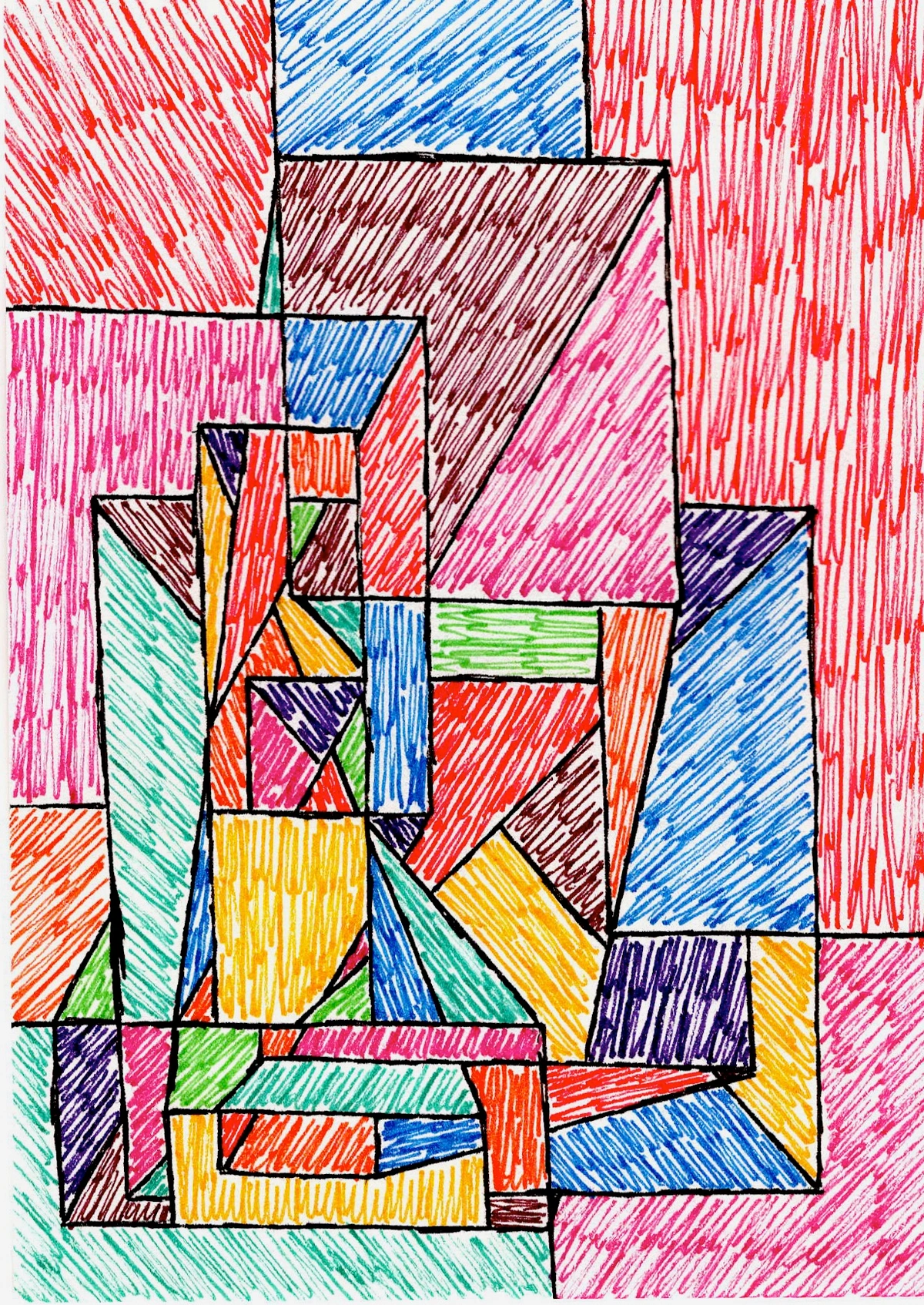
zenmuseum.com, https://creativecommons.org/licenses/by/2.0/
I remember seeing this one abstract piece a few years back – all fragmented shapes and bold lines. It wasn’t flawless, it certainly defied conventions, but it had this incredible internal logic, this intense emotional resonance. It felt honest, a direct conduit to the artist's inner world, you know? Like the artist truly poured themselves into it. That's the feeling I chase. Think of the early, unrestrained gestural energy of a young Willem de Kooning, whose canvases felt like a direct outpouring of raw emotion, his broad, sweeping strokes embodying a primal scream, or the pure, vibrating presence in a nascent color field by a blossoming Mark Rothko that seemed to pull you into a meditative state with its subtly shifting hues and immense scale. Even in geometric abstraction, it’s not just about precision, but the unexpected dialogue between forms, the tension, the sheer audacity of it. It can be a vibrant, chaotic impasto that tells a story through its tactile peaks and valleys, where every ridge holds a whisper of the artist's conviction or a surge of emotion, or a meticulously layered wash of color that evokes a deep, ineffable feeling, almost like a silent meditation. On the flip side, I've seen technically brilliant works that leave me cold, perfectly rendered but lacking that soul. If you're pondering how to start your own art collecting journey, especially with emerging artists, I've shared some insights in my guide on collecting emerging abstract art: a guide to discovering tomorrow's masters.
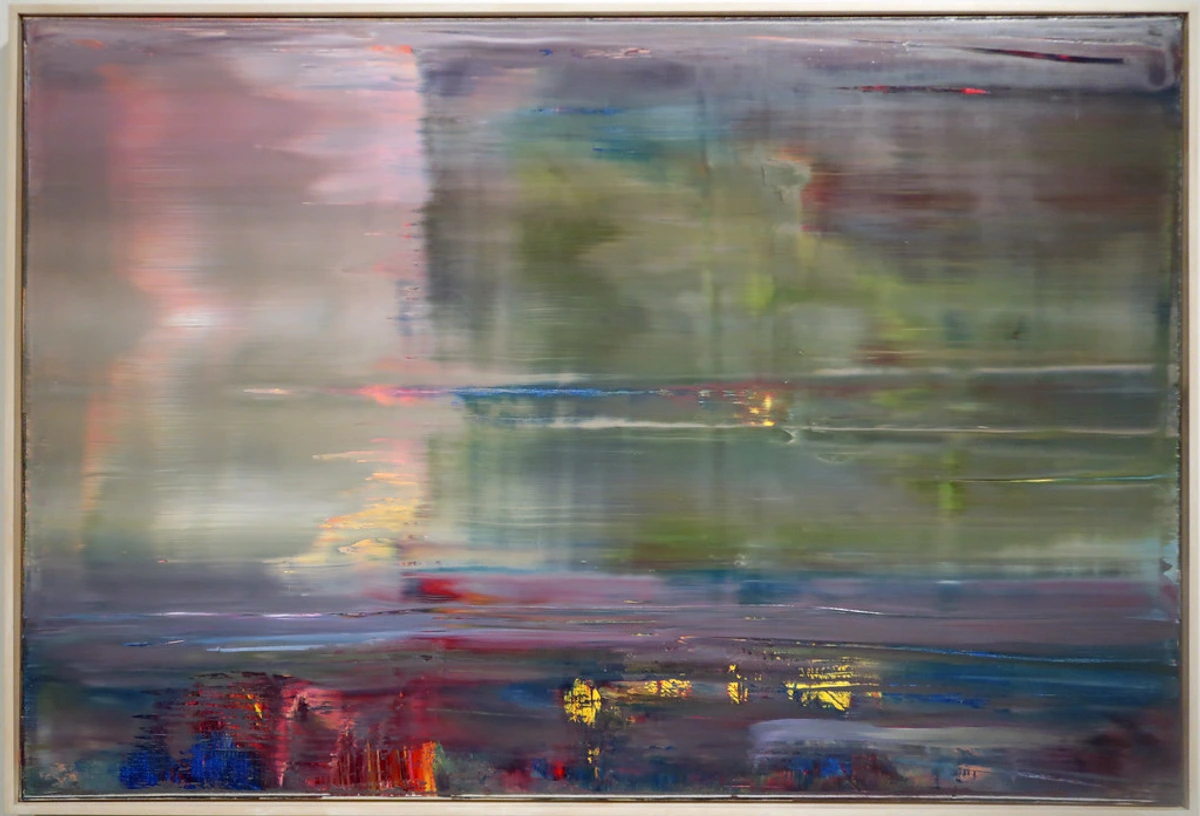
https://live.staticflickr.com/65535/51907566658_1100dbeb2a_b.jpg, https://creativecommons.org/licenses/by-nc-sa/2.0/
Sometimes, it's a raw, almost visceral texture, a visible history of the artist's hand. That palpable surface, the evidence of struggle or swift movement, can be as compelling as any color. But the visual allure, while powerful, is only the first layer of paint. What visual 'hum' resonates with you?
Q: What do you look for in the artist behind the art?
Ah, this is where the detective work begins, and frankly, where the real magic happens. It’s like being an art-world archaeologist, carefully brushing away layers to reveal the underlying story, or perhaps more accurately, peeling back the layers of an onion to find its core. For me, it's never just about the art; it's about the artist. The true depth of an artist's potential, for me, lies in the person behind the canvas. So, what else am I looking for? I'm looking for consistency, a commitment to their craft that goes beyond a few good pieces. Is there a cohesive body of work? For abstract art, this often means a consistent thematic exploration—perhaps the artist is continuously wrestling with the concept of impermanence through dissolving forms, exploring the ephemeral nature of memory through fragmented shapes, representing complex emotional landscapes through recurring abstract motifs that evolve in complexity, or even grappling with notions of liminal spaces or the passage of time through layered textures and shifting forms. It could also manifest as a signature mark-making technique that evolves over time, a distinctive approach to color palette, or recurring compositional structures that give their diverse works an undeniable unity.
But it could also be a deep dive into the rhythms of urban decay as depicted through distressed textures and muted palettes, or the mapping of the subconscious mind through spontaneous gestures and dreamlike compositions. I’ve even seen powerful abstract work exploring our digital existence, rendered through glitch art aesthetics or meticulously layered patterns that mimic data streams. It could be a dedication to particular materials, like integrating textiles or found objects, that defines their evolving visual language. You can see they're not just repeating a formula, but genuinely wrestling with ideas, taking risks, and learning from their experiments, maybe even enrolling in workshops or pursuing further education to refine their techniques and challenge their own previous aesthetics, perhaps even digging deep into art history or specific art theory to inform their practice. Challenging previous aesthetics might mean moving from purely geometric forms to incorporating organic, fluid lines, or from a muted palette to an explosion of vibrant hues, always with a clear conceptual thread guiding the evolution.

https://www.flickr.com/photos/fabola/41351098495/, https://creativecommons.org/licenses/by-sa/2.0/
Their personal philosophy and artistic vision? Beyond themes, I seek artists whose work is deeply informed by their personal history, cultural heritage, or even their scientific curiosities. I've seen abstract pieces that powerfully grapple with ancestral narratives, or others that mimic the complex structures of quantum physics – all filtered through a uniquely personal lens. I try to discern this by looking for how their work subtly evolves, how they challenge their own previous aesthetics, or if there's a unique intellectual thread connecting seemingly disparate pieces – perhaps a recurring philosophical question, or a deep engagement with a specific cultural context. I remember one artist whose early work was all explosive, primary colors, almost aggressive. But over a few years, I watched their palette soften, introducing muted earth tones and subtle textural shifts. It wasn't a radical departure, but a deeply personal, meditative evolution that completely deepened my appreciation for their entire oeuvre. I wanted to see that they've really explored their personal philosophy and artistic vision. It’s also about their passion, their resilience. Because let's be honest, the art world isn't always sunshine and rainbows; it takes grit. I look for artists who understand their own artistic style and can articulate why they do what they do, even if it’s still evolving. It's about seeing the person, not just the painting – their convictions, their struggles, their triumphs. This holistic view helps me understand if an artist is simply making pretty pictures, or if they’re truly on a profound artistic journey, ready to challenge themselves and their audience. I once saw an artist, whose early canvases were raw and almost brutal, transition to pieces of quiet, breathtaking serenity after a personal crisis; their work didn't lose its power, but gained a profound new dimension of resilience. And, perhaps most crucially, I look for their resilience – their ability to handle criticism, rejection, and the often-unforgiving nature of the art market. It’s a marathon, not a sprint, and those who keep showing up, even after setbacks, are the ones who truly thrive. What hidden narratives are you hoping to uncover in an artist's journey?
Q: What are the practical realities and expectations a gallerist has from an artist?
Alright, let's get down to brass tacks. Beyond that compelling vision and deep dedication, what are the tangible expectations once we start collaborating? This is where many artists, despite their brilliance, sometimes stumble. Look, beyond the art itself, a gallerist needs a partner – someone reliable, yes, but also someone who understands that we're building something together. Are you professional? Can you communicate clearly? Can you meet a deadline? And can you articulate the artistic intent behind your work? I'm not just looking for factual information; I need to understand the 'why' – the conceptual framework, the emotions, the intellectual journey. This clarity helps us tell your story more effectively to collectors and the press. I've learned more about project management than I ever thought possible, all thanks to the creative chaos of the art world! I remember a time when an artist, whose work I truly adored, would consistently miss crucial deadlines for exhibition materials or provide images in completely unusable formats.
I’m talking about issues that create delays, miscommunications, and frankly, make a gallery incredibly hesitant to work with an artist again. Mislabeled files, inconsistent naming conventions, incorrect dimensions, or a lack of crucial metadata can cause a surprising amount of headaches, believe me. Here are some common documentation pitfalls:
Issue | Example Problem | Impact on Gallery | Correct Approach |
|---|---|---|---|
| Inconsistent Naming | "untitled_final_v3.jpg" | Difficult to track, easily confused | "ArtistName_ArtworkTitle_Year.jpg" |
| Low-Resolution Images | Blurry phone photos for print | Unusable for press, catalogs, online | Professional, print-quality shots |
| Incorrect Dimensions | 100x100cm listed as 50x50cm | Logistics errors, collector disappointment | Precise dimensions (H x W x D) |
| Vague Medium Info | Just "Painting" or "Mixed Media" | Hard to describe, assess value/conservation | "Oil on canvas," "Acrylic and found objects on panel" |
| Missing Materials | No mention of specific pigments/supports | Crucial for conservation, appraisal, authentication | Detailed list of all materials used |
| Missing Artist Statement/Bio | No context for work or artist's story | Gallery can't effectively communicate intent or narrative | Concise artist statement and professional bio |
This isn't just an annoyance; these materials are critical for press releases, exhibition catalogs, online listings, and answering collector inquiries. Without them, we simply can't promote the work effectively. It was like trying to herd cats while juggling chainsaws – a truly exhausting dance for both of us! And yes, I'll admit, there was a time early in my career where I, too, was a bit cavalier with my own documentation – I thought the art spoke for itself. It took me a few frantic searches through misplaced files and a couple of truly awkward conversations to learn the hard way: organization is liberation. And trust me, I'm still learning (and occasionally losing files).
So, yes, professionalism, organization, and a genuine willingness to collaborate are not just important, they’re absolutely vital, foundational really. This includes a willingness to engage with the gallery's marketing efforts – providing high-quality images for press, participating in social media campaigns, or being available for interviews and public appearances. And as I mentioned, the meticulous documentation of your artwork – those high-res images, precise descriptions, and clear provenance (think of it as the artwork's verifiable 'family tree,' a detailed record of ownership and history, essential for its value and authenticity, even for emerging artists to build credibility from day one) – is absolutely non-negotiable for us. I mean, if an artist can’t even accurately describe their own work, or provide the basic assets for us to promote it, it raises a red flag about their overall commitment to their professional journey. It's also worth noting the growing importance of artist-led exhibitions or self-published works. These initiatives, while not traditional gallery representation, allow artists to build a track record, demonstrate their curatorial vision, and show serious initiative, which can be incredibly attractive to a gallerist down the line. It shows you're not waiting for permission to create and engage.
Beyond the canvas, the true partnership blossoms from shared understanding and mutual respect. Simply put, good art demands good business practice. This also extends to understanding gallery commission structures beyond just the percentage: does it cover marketing, shipping, installation, insurance? A typical commission might be 50%, but what that 50% covers can vary wildly between galleries, impacting your net earnings. And, if applicable in your region, are you aware of artist's resale rights (droit de suite), which entitle artists to a percentage of the resale price of their work in certain countries? Beyond that, are you aware of your moral rights, which include the right to attribution and integrity of your work, meaning it shouldn't be distorted or mutilated without your consent? These aren't just details; they're critical aspects of a professional relationship. What part of the art business do you find most challenging to navigate?
Aspect | What I Look For | Why It Matters |
|---|---|---|
| Authenticity | A unique, personal voice that isn't chasing trends. | Art that truly resonates stands out, endures, and connects deeply with collectors. |
| Consistency | A coherent body of work, showing evolution. | Demonstrates dedication and a serious, sustained practice. |
| Professionalism | Clear communication, organized portfolio, reliability, strong documentation. | Essential for a smooth, productive, and trustworthy partnership. |
| Vision | The artist's ability to articulate their 'why' and future direction. | Shows self-awareness, intellectual depth, and potential for growth. |
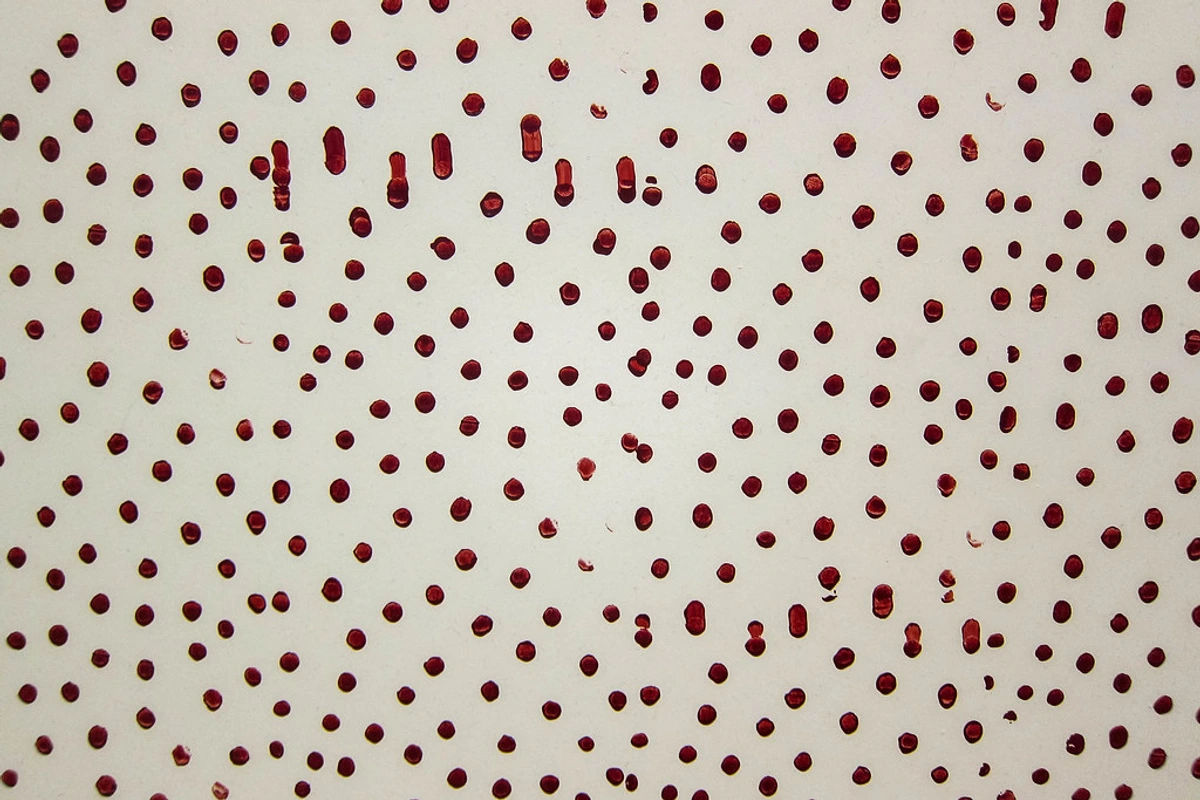
https://live.staticflickr.com/3731/13402193294_7e67ffc22a_b.jpg, https://creativecommons.org/licenses/by/2.0/
Q: What's your take on the evolving role of AI in art?
Alright, let's talk about the elephant in the studio, the one that's got everyone scratching their heads: the evolving landscape of AI in art. It’s fascinating, terrifying, and exhilarating all at once. I'll confess, my gut reaction was a mix of fascination and a healthy dose of existential dread, a familiar feeling when innovation barges into the sacred spaces of human creativity. My first encounter with a truly compelling AI-generated piece had me peering at it skeptically, then cautiously, then with a reluctant admiration, thinking, "Is this really happening?" My initial reaction? A healthy dose of skepticism, I admit, bordering on pure Luddism. I mean, my job is about human expression! But then, you start to see the incredible possibilities, and I found myself unexpectedly drawn into the debate, almost against my will. Honestly, I'm still trying to wrap my head around it myself, and my opinions are probably evolving as quickly as the technology!
Could AI even assist in the conservation of fragile abstract pieces by simulating degradation over time, analyzing the chemical composition of pigments to suggest optimal preservation methods (for instance, by predicting how a certain binder might react with a specific pigment under varying humidity over decades), or help analyze complex compositions to identify hidden mathematical symmetries or recurring motifs that evade the human eye? Beyond that, I'm genuinely curious about its potential in art education, perhaps by creating interactive learning experiences about art history or technique (imagine an AI-powered tutor that explains Cubism by deconstructing a Picasso, or guides you through mixing colors like a master), or even enhancing accessibility for disabled individuals through new modes of artistic creation or engagement (e.g., enabling paralyzed artists to create complex digital works using eye-tracking, or translating visual art into tactile or auditory experiences for the visually impaired). And, while I focus on intentional human curation, I can't ignore its potential to generate novel aesthetic experiences or democratize art creation by lowering the technical barrier to entry for some, allowing more people to experiment with visual concepts, even if the final, curated work still requires significant human intervention. And yes, I've even seen artists using AI to explore endless color palettes or test compositional balances before a single brushstroke is laid, treating the AI as a hyper-efficient digital assistant, or even as a tool for initial conceptualization – quickly generating thousands of variations on an idea to spark a new direction, much like a brainstorming partner. It's like having a lightning-fast visual sketchpad that never tires.
zenmuseum.com, https://creativecommons.org/licenses/by/2.0/
For me, the question isn't 'Is it art?' – because that's a tired debate we've had a thousand times with photography, then digital art, etc. The question is: 'What is the human input? What is the intent?' Is AI a tool, like a brush or a camera (or even a generative platform like Midjourney or DALL-E), helping an artist realize a vision? Or is it the primary creator, generating pretty pictures without deeper conceptual underpinning or significant human intervention? Who owns the intellectual property when an AI generates an image based on vast datasets of existing art? This is a critical legal and ethical dilemma that could significantly impact an artist's livelihood and ability to protect their unique voice, especially concerning issues of plagiarism and fair use. And what about prompt engineering – is the skill of crafting the perfect text prompt to guide the AI itself an artistic act, akin to a chef selecting ingredients and guiding the cooking process, or a composer writing a score for an orchestra, even if not physically stirring the pot or playing an instrument? For me, the human curation of AI outputs, the thoughtful selection and refinement, is where the genuine artistic intent lies. These are conversations we gallerists and artists are grappling with daily. While some argue about the market value of AI-generated art versus human-made, for me, the human intent and conceptual framework are what elevate AI-assisted work to genuine art, preventing the devaluation of human creativity.
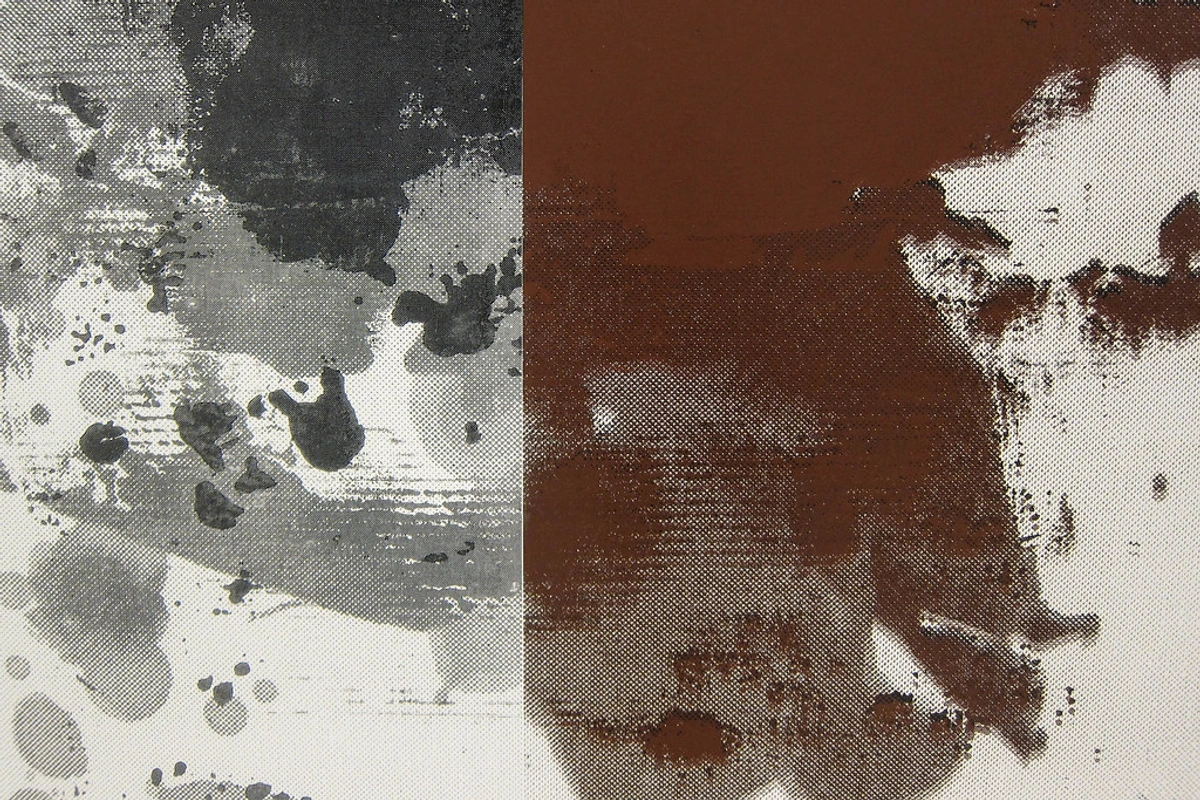
https://live.staticflickr.com/65535/51907566658_1100dbeb2a_b.jpg, https://creativecommons.org/licenses/by/2.0/
Beyond that, I worry about the subtle pressure on artists to jump onto the AI bandwagon, or how it might subtly devalue the sheer, messy human effort behind a hand-painted canvas. There are also wider ethical implications we need to consider: market saturation, the potential for a race to the bottom in terms of artistic value, the quiet erosion of traditional skill sets, or even the environmental impact of training massive AI models, if we're not thoughtful. And, perhaps most critically, we need to address the ethical implications of AI training data – ensuring that the data used to train these models is ethically sourced, diverse, and doesn't perpetuate existing biases or inadvertently plagiarize existing artists' work. I’m genuinely intrigued by artists who use AI as a co-creator, pushing boundaries and exploring new forms of expression. But if it's just prompting a machine without any genuine artistic inquiry or significant human intervention, then it's less compelling to me. We're all still figuring out the role of AI in art curation, but it's certainly making us ask deeper questions about creativity itself, which isn't a bad thing, I suppose. It keeps us on our toes, if nothing else. What are your thoughts on AI's place in the art world?
Q: What's your unfiltered advice for emerging artists hoping to get a foot in the door?
Okay, listen up, because this is the unvarnished truth, the stuff I wish someone had hammered into my head early on. Looking back, I wish someone had really drilled home the business side of things. I was so caught up in the 'art for art's sake' romanticism, and while that's beautiful, rent still needs paying, right?
First, and this is non-negotiable: keep making your art. Seriously. The more you create, the more you refine your voice. Don't wait for permission or validation. Build a substantial body of work that speaks to who you are, what you stand for.
Second, cultivate your online presence. A professional website, a curated digital portfolio that's easily shareable, and an active social media presence (beyond just Instagram, think art-specific communities like Saatchi Art, Artsy, or even dedicated online exhibition platforms) are essential these days. And when you're there, share your process, your studio chaos, your thoughts – and maybe even short videos of your techniques or snippets from interviews – not just the polished final product.
Third, network, but authentically. Go to openings, attend artist talks, talk to people, be genuinely interested in their work. Don't just hand out business cards like confetti – forge genuine connections, the kind that might lead to a shared coffee and a conversation that lasts longer than a gallery opening. A simple, "I really enjoyed your piece X, the way you used Y was fascinating. I'm Artist Z," can go a long way. The art world is small, and genuine relationships are gold. This is also where art advisors can play a significant role, both in helping artists connect with collectors and vice versa.
Fourth, understand your unique selling proposition. What makes your work, your vision, unlike anyone else's? To uncover it, ask yourself: the more you can drill down into these, the clearer your voice becomes:
- What recurring themes or motifs appear in my work? Dig deeper than surface-level. Are they symbols of personal struggles? Cultural narratives? Scientific observations?
- What emotions do I consistently aim to evoke? Is it serenity, chaos, introspection, defiance?
- What unique materials or techniques do I employ? And why do I choose them? What do they communicate that others can't?
If you can articulate that – for example, "I explore the fragility of urban structures using industrial materials, creating textural, almost archaeological layers that evoke both strength and decay" – you're halfway there. Also, develop a concise artist statement that clearly articulates your vision and process, even if it's still evolving. A compelling artist statement is your voice on paper; it tells me your 'why' and contextualizes your work. And don't be afraid to show your creative journey – people connect with stories. This also includes understanding your collector base – who are the people most likely to connect with your specific style of abstract art? What motivates them? Tailoring your presentation, not your art, to resonate with those potential collectors can be a game-changer.
Fifth, and this is often overlooked, explore artist residencies and grants. These aren't just about money; they offer time, space, community, and invaluable exposure, especially for abstract artists who might not fit traditional gallery molds immediately.
Sixth, and this is crucial for the "practical side" we talked about: understand the business of art. Beyond just pricing or brand identity, educate yourself on key aspects:
Business Aspect | Key Considerations |
|---|---|
| Gallery Contracts | What's covered? Understand commission rates (40-60% typical), what services (marketing, shipping, installation, insurance) are covered, and consignment duration. A higher commission might cover extensive promotion and logistical support, while a lower one might mean more artist responsibility. |
| Insurance | Who's liable? Clarify who insures your art while at the gallery, in transit, or on loan. Don't assume. |
| Representation | Exclusivity matters. Differentiate exclusive vs. non-exclusive, and direct sales vs. consignment agreements. Each has different implications for where else you can sell your work. |
| Copyright & Licensing | Protect your images. Understand your rights to reproduce your images. For example, can a gallery use your artwork image for a press release indefinitely, or do you retain control? Always ensure proper credit. |
| Artist's Resale Rights | Droit de suite. Familiarize yourself with this in applicable regions; it entitles you to a percentage of secondary market sales. |
| Moral Rights | Integrity of your work. Protect your right to attribution and integrity – your work shouldn't be altered or presented inaccurately without consent. |
Look for resources from arts legal organizations, artist advocacy groups (like Artists' Legal Advice Services), or online guides specializing in intellectual property for visual artists. And finally, prepare a professional, up-to-date artist CV/resume that details your education, exhibition history (even smaller group shows or online exhibitions count!), awards, residencies, and any publications. This document, alongside your artist statement, isn't just a formality; it's a testament to your professional journey and commitment. It's a bumpy road, truly, but the ones who keep showing up, even after countless rejections, are the ones who make it. It's a marathon, not a sprint, and every bit of knowledge helps. And hey, if you feel your art is ready, you can always check out some pieces for sale on my site to see the kind of vibrant, abstract work I'm drawn to – maybe it will spark an idea! Start by getting your portfolio organized and refining that artist statement; those are solid first steps. What's one piece of advice you wish you'd received earlier in your art career?
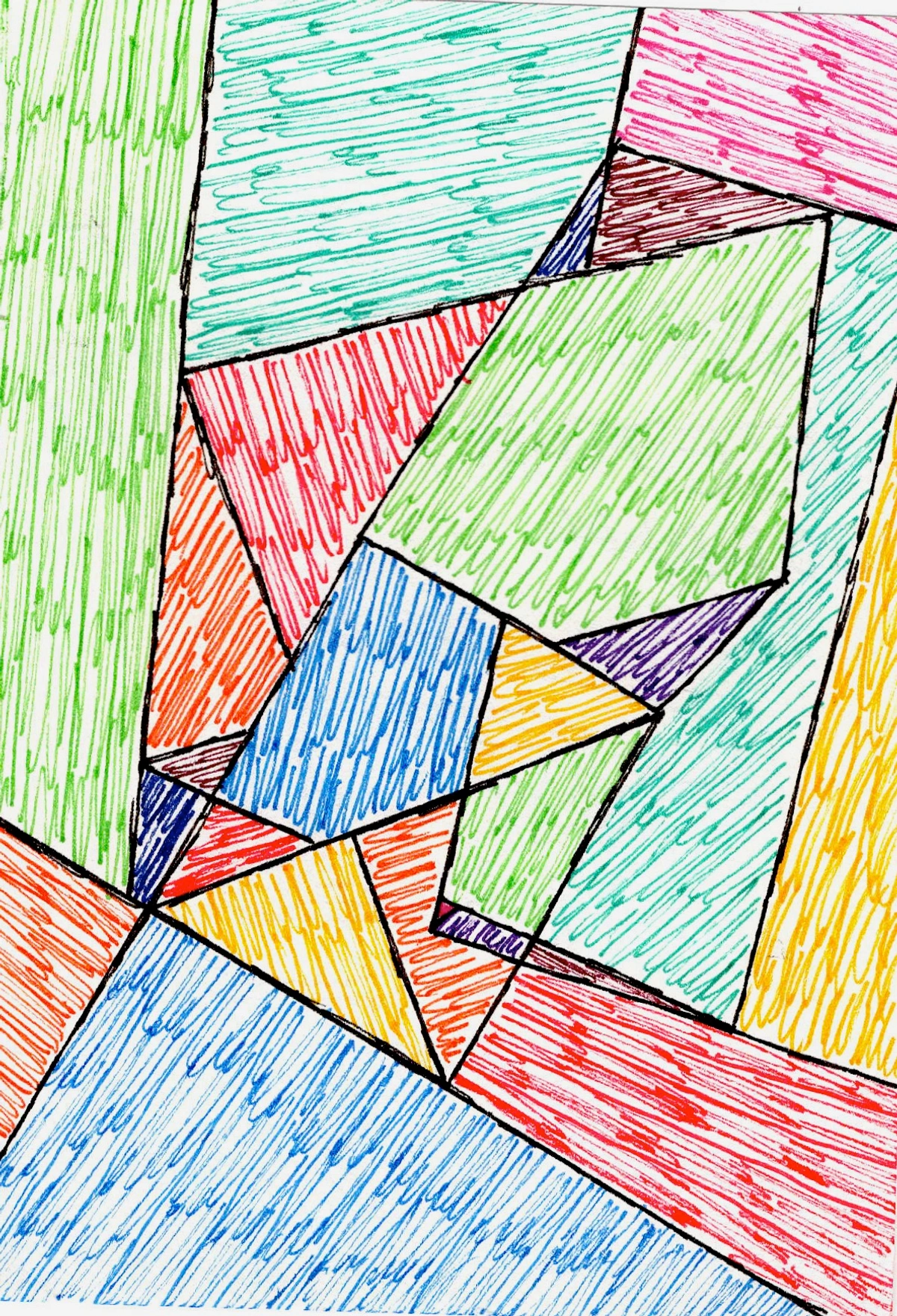
zenmuseum.com, https://creativecommons.org/licenses/by/2.0/
Q: What advice do you have for collectors hoping to spot new talent?
This is the fun part, the treasure hunt, if you will! For collectors, it's about developing your eye and truly, utterly trusting that gut feeling we talked about earlier.
First, visit everything. Immerse yourself! Small independent galleries, artist-run spaces, art school graduation shows (they’re breeding grounds for fresh perspectives!), local art fairs, even online platforms like Saatchi Art, Artsy, or the digital showcases emerging artists often host on their own professional sites. Think of major international art fairs like Art Basel or Frieze, but also vibrant regional fairs, university art departments, community art centers, or even local pop-ups – they’re a condensed version of the art world, fantastic for discovery. The more art you see, the more you'll understand what genuinely moves you, what stirs your imagination. Also, keep an eye out for artists who are actively engaging with their community, both online and off; this often signals a vibrant, developing career and a willingness to connect.
Second, do your homework. When a piece catches your eye, let curiosity lead you down the rabbit hole. Learn about the artist, their journey, their influences (e.g., artistic movements, personal experiences, philosophical ideas, or even other artists). Seek out artist statements, interviews, and reviews. Understanding the narrative behind the art can deepen your appreciation immensely, turning a purchase into a meaningful connection. This also means looking at their exhibition history, any awards or grants they’ve received, and even mentions from art critics or curators – especially those who are actively engaging on social media or featured in smaller, reputable art publications like Artforum, Hyperallergic, or Frieze Magazine – as these are often excellent indicators of emerging talent and validation within the art world, helping to shape public perception. Looking for artists discussed in reputable art publications or by respected art critics can be invaluable.
When a piece stops you, ask yourself:
- What emotion does this evoke?
- How does the artist use color or form to achieve that?
- How does the artist manipulate light, shadow, or even negative space to draw my eye?
- What's the conversation happening between these colors, these forms?
- What story, if any, is being told in abstraction?
Crucially, look for artists who are actively engaging in critical discourse, participating in studio visits, or presenting their work for critiques with peers and mentors – it shows intellectual depth and a commitment to refining their practice beyond mere technical skill. These artists who are actively participating in artist talks or offering studio visits often have a deeper, more engaged relationship with their work and with potential collectors, offering invaluable insights directly from the source.
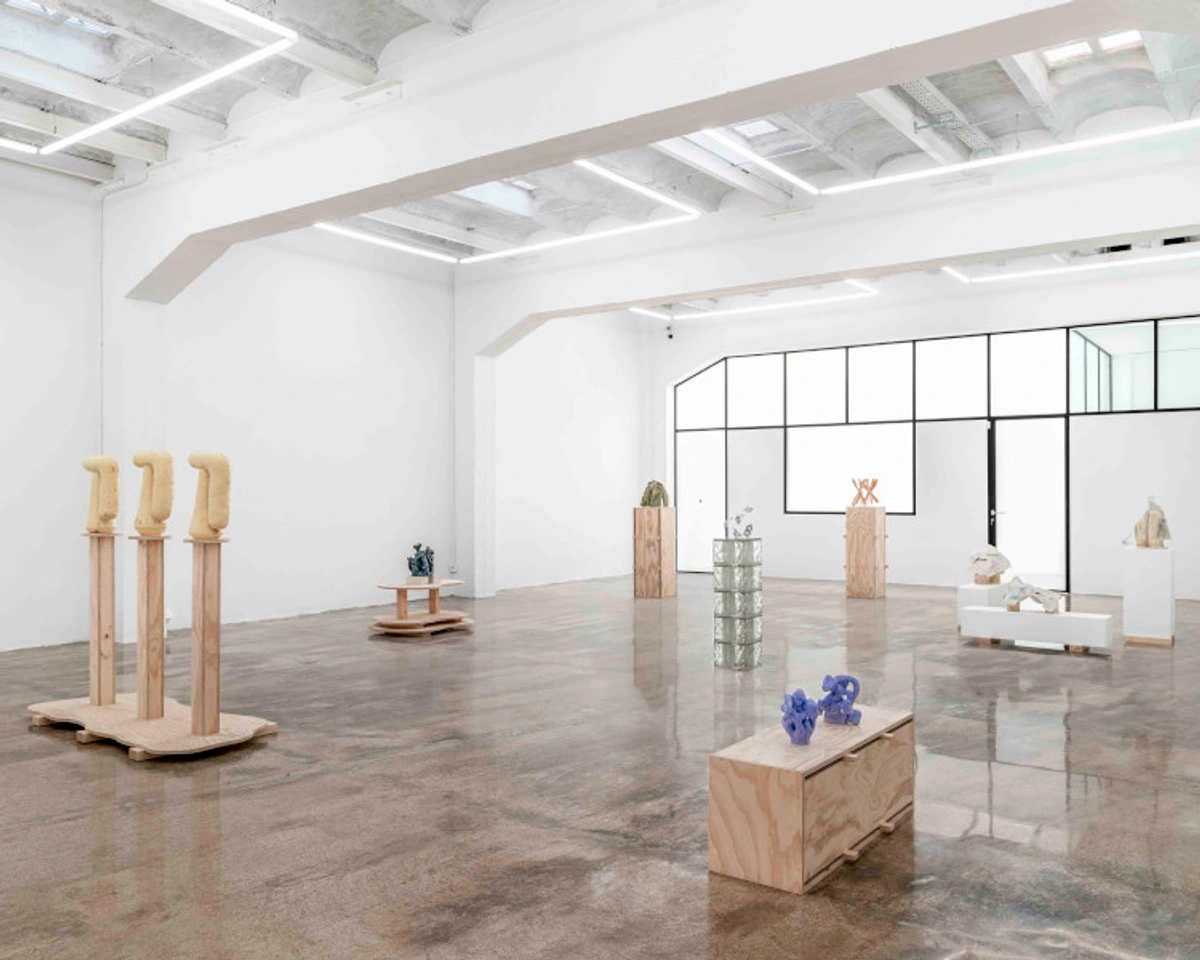
https://www.widewalls.ch/magazine/antoni-ferrer-interview, https://creativecommons.org/licenses/by/4.0/
Third, don't be afraid to take a chance. Emerging artists often offer incredible value, and there's an unparalleled thrill in supporting someone at the very beginning of their journey, watching their star rise. Oh, the sheer joy of it! Also, consider the artist's long-term vision and potential for growth – are they evolving? For instance, do you see a clear progression in their themes or techniques, perhaps moving from smaller, exploratory works to ambitious large-scale installations? These can be powerful indicators of future relevance.
Fourth, consider scale and context. Abstract art, especially, transforms with its environment. How does a piece look in a grand gallery space versus a cozy home? Consider how the artwork will interact with your intended display area – its size, its colors, and the way light plays across its surface. And remember the physicality of abstract art – the scale, the texture, how light dances across the surface – it's something often lost on screen, making in-person viewing truly crucial. I mean, we've got fantastic guides on decoding abstract art if you want to understand the genre better, or explore the emotional language of color for example. And remember, the joy isn't just in owning a piece, but in being part of an artist's story. It's a wonderful feeling, knowing you’ve played a small part in a larger creative journey. What kind of artistic 'treasure' are you hoping to unearth?
Q: Let's talk FAQs: What are some common questions you get about art discovery?
People always have burning questions, and I love getting into the weeds with them. So, let's dive into a few of the most common inquiries I receive about discovering new art and artists:
- Q: How often do you find truly 'new' talent?
- A: It varies wildly! Sometimes it feels like a drought, other times it’s a cascade. But I'd say I make a significant 'discovery' – someone I genuinely want to champion – perhaps a couple of times a year. It's rare, but oh so rewarding.
- Q: Is it harder for abstract artists to get discovered?
- A: No, not inherently. While abstract art can sometimes require more viewer engagement or education to fully appreciate its nuances – because it often doesn't offer an immediate, recognizable subject, which can initially be a hurdle for new collectors – if the work is strong and honest, the genre matters less than the authenticity. Perhaps it requires a gallery or collector who truly understands the emotional language of color or the power of texture in non-representational work. And let's not forget the crucial role of curatorial vision – a gallerist or curator who deeply believes in an abstract artist's work can be the most powerful advocate, helping to educate collectors and shape market perception. Think of pioneers like Wassily Kandinsky and Hilma af Klint, whose early explorations redefined art, or minimalists like Agnes Martin, whose subtle grid paintings speak volumes. Or consider Mark Rothko's monumental color fields, or the tactile quality in a piece by Antoni Tàpies – their work transcends 'genre' through sheer authenticity. Even Jean-Michel Basquiat, whose raw, expressive style, while not purely abstract, championed a directness of vision that resonates deeply and initially challenged traditional art world perceptions. You might even consider how Abstract Expressionism as a movement broke through traditional barriers, or how various abstract art movements have consistently challenged perceptions. The key is the depth of the artistic inquiry, not the style itself. Ultimately, strong conceptual underpinnings and a unique voice are paramount, regardless of artistic style or genre. And remember, self-taught artists often bring a powerful, unique perspective that can be just as compelling, sometimes even more so because their vision is unburdened by academic conventions; they often forge entirely new pathways of expression precisely because they aren't bound by established rules.
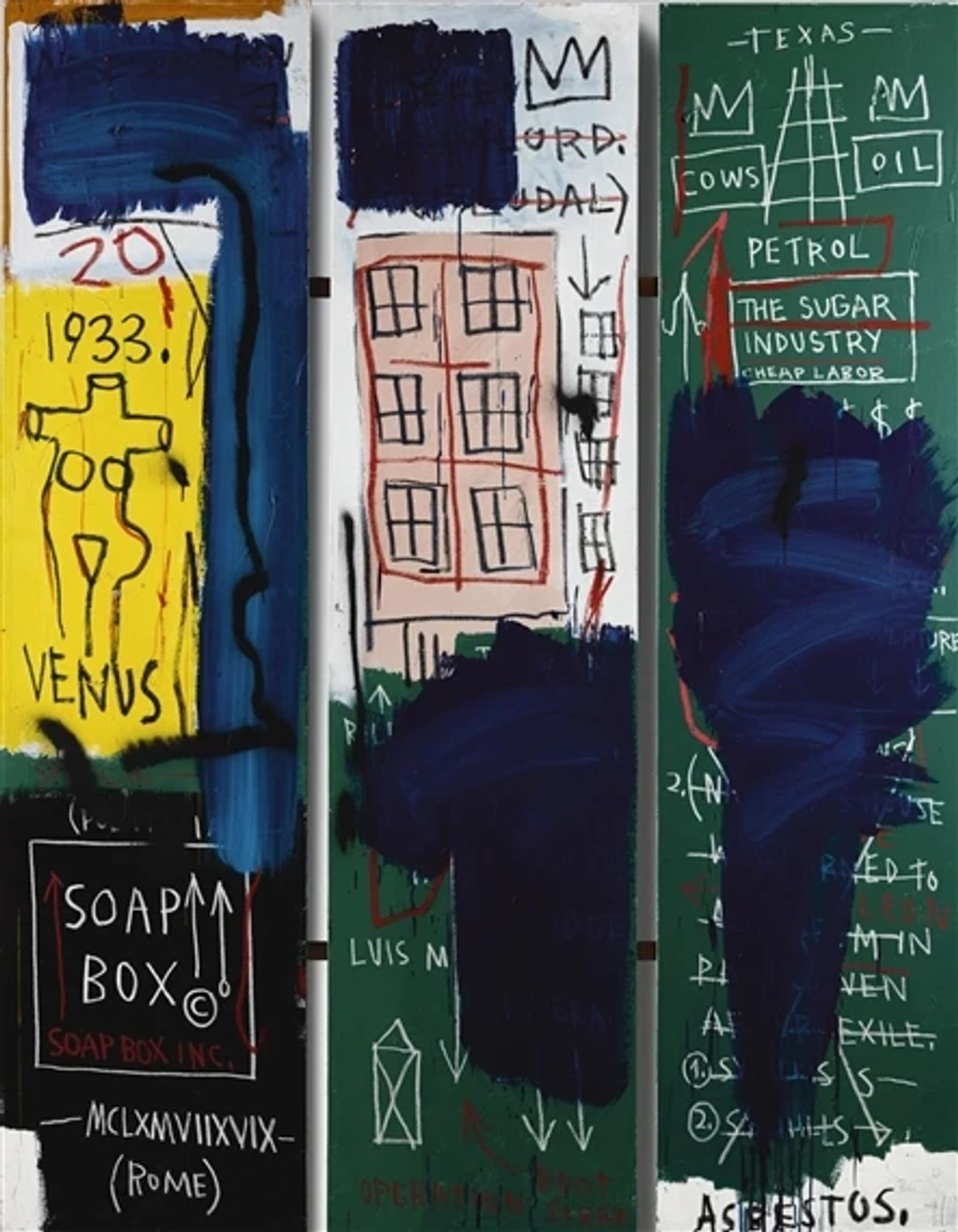
https://upload.wikimedia.org/wikipedia/commons/b/b2/Untitled_Jean-Michel_Basquiat_.webp, https://creativecommons.org/licenses/by-sa/4.0
- Q: How important are artist statements and CVs/resumes in the discovery process?
- A: Extremely important! Your artist statement is your voice on paper; it tells me your 'why' and contextualizes your work. It's your opportunity to clearly articulate your vision, your process, and the conceptual framework behind your art. A well-organized, professional CV/resume shows your commitment, education, and exhibition history, offering concrete evidence of your professional journey and dedication to the art world. I'm also looking for any mentions of art critics, art advisors, or curators who have shown interest in your work – it provides another layer of validation and insight into how others in the art ecosystem perceive your practice. Both demonstrate that you take your practice seriously and understand the larger art ecosystem. They're not just bureaucratic necessities; they're essential tools for telling your story and proving your dedication.
- Q: Should emerging artists contact galleries directly?
- A: Yes, but with respect and research. Don't cold-call every gallery. Research who you're approaching, make sure your work aligns with their aesthetic, and always send a concise, professional portfolio. And always, always include your website or Instagram. Seriously, it's 2024!
- Q: How important is social media follower count or engagement?
- A: Honestly? It’s less about the numbers and more about the quality of engagement. I'm looking for genuine connection, thoughtful dialogue, and a clear artistic narrative, not just viral posts. A strong online presence signals professionalism and a willingness to connect, but raw talent and a coherent vision always come first.
- Q: What is the role of art advisors in helping emerging artists get discovered?
- A: Art advisors can be incredibly valuable! They often act as a bridge between artists and collectors, identifying talent, helping artists navigate the market by refining their presentation and pricing strategies, and presenting their work to a curated network of buyers. For an emerging artist, a good advisor can provide essential guidance and open doors that might otherwise remain closed.
- Q: How important are art critics and publications in discovering new talent?
- A: Critically important! Reputable art critics and publications (both online and print) play a significant role in legitimizing new artists, shaping public discourse, and drawing the attention of galleries and collectors. A well-placed review or feature can elevate an artist's profile tremendously, offering valuable third-party validation and intellectual context for their work. I pay close attention to who's being discussed in the journals I respect.
- Q: I don't have a long exhibition history. How can I best present my work to galleries?
- A: Focus on the strength and coherence of your portfolio and a compelling artist statement. While exhibition history is valuable, a powerful body of work, clear articulation of your vision, a robust CV/resume that highlights any education, residencies, or smaller group shows, and a demonstrated commitment to your practice can speak volumes. Think about quality over quantity, and highlight any meaningful group shows, residencies, or awards you have participated in, no matter how small. Passion and professionalism shine through.
- Q: How important are art fairs for discovering new abstract talent?
- A: For both artists and collectors, art fairs are goldmines! For artists, they offer unparalleled exposure, direct interaction with a diverse audience, and vital networking opportunities with gallerists, curators, and fellow artists. For collectors, it's a chance to see a vast array of work from many galleries and independent artists in one place, compare styles, and often discover fresh talent before they hit the larger gallery circuit. They can be intense, but incredibly rewarding.
- Q: What about artist-led initiatives or collectives?
- A: Absolutely! These grassroots efforts are vital, especially for abstract artists who might be pushing boundaries outside traditional gallery structures. They offer a fantastic platform for experimentation, community building, and gaining visibility. For a gallerist like me, these spaces are often where I find the most exciting, raw, and unfiltered talent – artists who are creating on their own terms, without immediate commercial pressure. I keep a very close eye on them.
- Q: How important is formal art education in discovering abstract talent?
- A: That's a great question, and there's no single answer. While formal education can provide foundational skills, critical theory, and invaluable networking opportunities, I've seen equally profound and impactful work from self-taught artists. What matters more to me is the depth of the artist's inquiry, their relentless dedication to their craft, and their unique artistic vision, regardless of whether it was honed in an academy or a solitary studio. A strong art education can certainly accelerate professional development, but it's not a prerequisite for brilliance in abstract art. Ultimately, the art speaks for itself. Also, artist residencies are often key stepping stones for emerging abstract artists, providing dedicated time, space, and a supportive community to develop their practice. What other questions about art discovery keep you up at night?
Ultimately, navigating the art world's questions requires a blend of passion, practicality, and an unwavering commitment to authenticity.
Conclusion: The Unpredictable Thrill of Discovery
So there you have it, a little peek behind the scenes into my messy, wonderful, and utterly unpredictable world of art discovery. Much like the art itself, the journey is rarely linear, but oh, the rewards! There’s nothing quite like that thrill of seeing something genuinely fresh, something that makes your heart sing a little louder. I remember stumbling into a tiny, almost hidden space in Rotterdam last year, perhaps an artist-run gallery or a small pop-up. The artist was barely out of art school, but their massive canvases, alive with bold, almost aggressive impasto brushstrokes and layers of distressed fabric, just stopped me cold. It was like they were screaming and whispering all at once; the fabric subtly spoke of time and decay, yet the vibrant brushstrokes felt utterly contemporary, creating a profound tension that was both ancient and immediate, almost like feeling a city's heartbeat through its crumbling walls. Another time, I found myself captivated by a series of quiet, minimalist abstract drawings in a small pop-up in Utrecht – each delicate line so carefully placed, imbued with an almost unbearable emotional weight through its precise spacing and interaction with the stark white paper, creating almost ethereal meditations on emptiness and presence, like a silent prayer whispered on paper. It was a stark contrast, but both held that same raw, undeniable authenticity. In both cases, the artist's personal story and background subtly, yet powerfully, informed the work, adding layers of meaning that resonated deeply. That visceral connection? That's the gold. It’s why I do what I do, and why I feel so passionately about bringing incredible art to people who appreciate it. Perhaps one day, you’ll discover your own new favorite artist, perhaps even stumble upon one of the pieces I've curated with my own two hands and discerning eye – pieces that, like the art itself, are born from that same relentless pursuit of the extraordinary in gestural abstraction, geometric precision, or vast color fields. Until then, keep looking, keep questioning, and keep letting art not just move you, but fundamentally transform you. And if you're ever in 's-Hertogenbosch, you might even see some of these discoveries – pieces I’m particularly proud of, curated to move you – at my museum. What's your most memorable art discovery? I'd love to hear about it.




